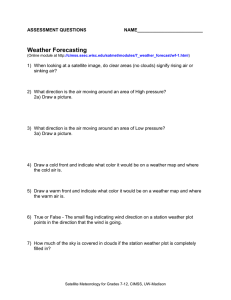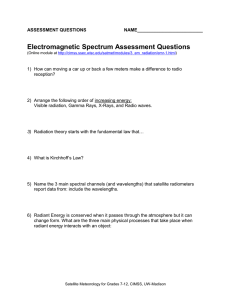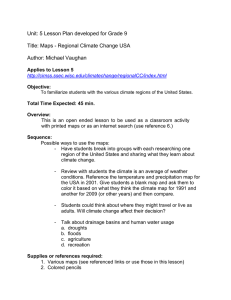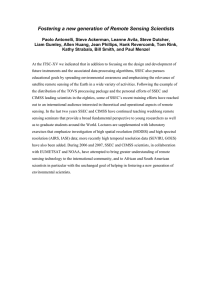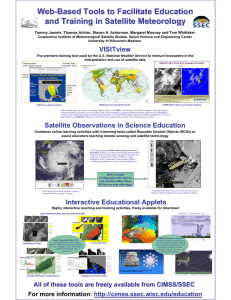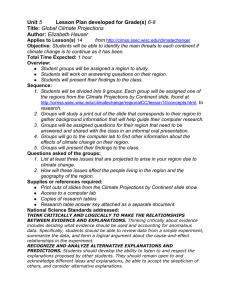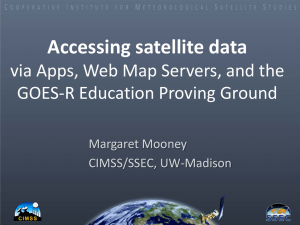SatCam
advertisement
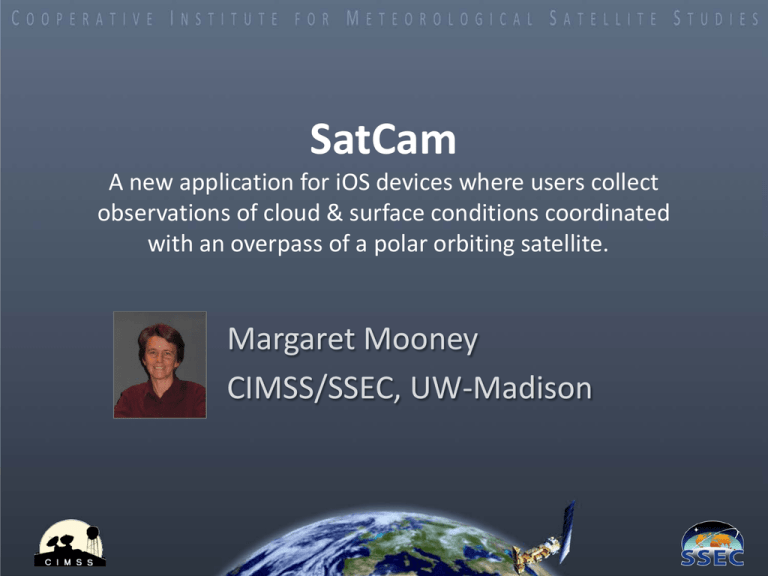
SatCam A new application for iOS devices where users collect observations of cloud & surface conditions coordinated with an overpass of a polar orbiting satellite. Margaret Mooney CIMSS/SSEC, UW-Madison About CIMSS • CIMSS is a Cooperative Institute between: – University of Wisconsin-Madison – National Oceanic & Atmospheric Administration (NOAA) – National Aeronautics and Space Administration (NASA) • CIMSS operates within the UW-Madison Space Science and Engineering Center (SSEC) • CIMSS scientists conduct research using remote sensing systems for meteorological & surface-based applications. • CIMSS Education and Outreach efforts prioritizes weather and climate literacy – http://cimss.ssec.wisc.edu/education CIMSS iPad Library The CIMSS iPad Library is a new initiative to engage teachers and students in data acquisition and regional climate studies. Through our NASA funded Climate Literacy Ambassadors project, science teachers can borrow iPads (like a book) for the entire school year! The first units were distributed at the 2012 ESIP Teacher workshop in July. FREE http://satcam.ssec.wisc.edu/ The SatCam Team includes Liam Gumley (Project PI) Dave Parker (iOS App) Bob Holz (Science and UI Advisor) Bruce Flynn (Web Services) Willem Marais (Satellite Imagery) Let’s walk through the four main SatCam screens Settings To start, you’ll need to register (sign in) with SSEC You can turn voice cues on to be notified 10 minutes prior to a satellite overpass You can also set the start & stop time for voice cues Passes The top of each screen indicates time remaining until next overpass If you click on a satellite, you’ll get a new screen showing the orbit path! Sweep your finger on the screen to see passes for the next 7 days History Eventually you will have a record of your observations, each one shaded based on user-classified sky conditions Regardless of what screen you’re on, (or whether your iPad is open) the voice cue will notify you 10 minutes prior to an overpass For 5 minutes, a satellite will move along the top of your screen with a countdown clock Let’s make an observation! Click on “Make Observation” to read the directions on subsequent screens, SatCam will guide you through the process You can make a manual observation (and take a picture of the sky) or set your unit down and let SatCam take the picture automatically Manual Point and Click! Automatic Set your unit down and let SatCam take the picture Next, point your iOS device at the horizon to take a picture and classify your surroundings About an hour after you submit your observation, SSEC will send the corresponding satellite image to you, indicated by a badge (red-bullseye) near the History icon. The badge will have a small white number inside indicating the number of new satellite images. You will see • Your sky observation • Your ground picture • Your sky classification • Your ground classification AND - the corresponding satellite image! Click on the satellite image to enlarge! Two of my favorite observations My yard in Madison Wisconsin! Philo California Vacation Click on the images to enlarge & learn more Sunny and clear where I took the observation but smoke to the north & stratocumulous to the west! Next Steps • SSEC plans to provide a SatCam website where users can see and rate observations for quality and accuracy. This will help to eliminate poor observations. High quality observations will be used to validate satellite products. • ESIP Educators will be collaborating on lesson plans to teach weather and climate topics using SatCam data during the fall of 2012. Questions? Feel free to contact me! Margaret Mooney CIMSS/SSEC, UW-Madison margaret .mooney@ssec.wisc.edu (608) 265-2123
